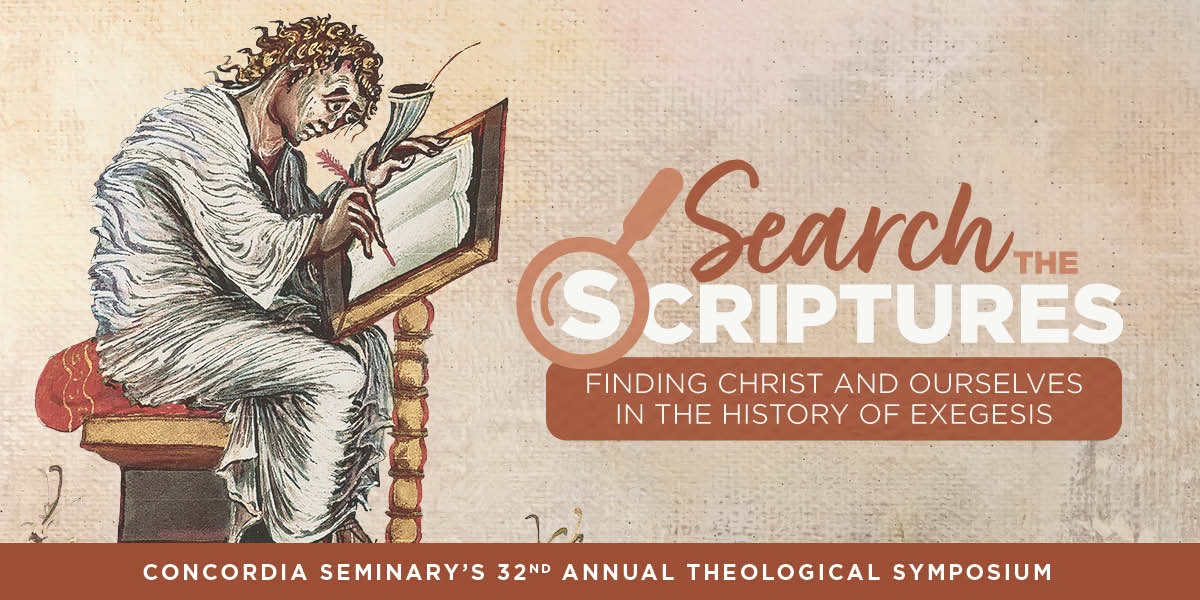Loading...
Keywords
church fathers, interpretation, patristic, mountain of the Lord, prophecy, bethlehem, christian, christocentrically, doctrinal, lutheran, messianic
Description
Testament prophecy, where the prophet preached concerning his own time and where he spoke of the Messiah, can be a difficult task, especially when the passage under consideration is not explicitly interpreted in the New Testament. In such instances, readers of the Old Testament ought to consider the exegesis of the church fathers. Rather than viewing the Old Testament interpretation of the fathers as a relic of a primitive age, our own Lutheran fathers encourage us to read the church fathers, not just for doctrinal points, but for their interpretation of the Bible. The fathers can teach us how to read the Bible canonically, connecting broad biblical themes, and, more specifically, Christocentrically.
This presentation will examine how the Church fathers read the prophecy of the Mountain of the Lord (Micah 4) and that of the Messiah (Micah 5), the Ruler from Bethlehem, as Messianic prophecies. After surveying the patristic interpretation of these two texts, the paper will assess the value of the fathers’ exegesis for teaching and preaching today. What lessons and principles of interpretation can we learn from the fathers, perhaps correcting our own assumptions about the text? Finally, this presentation will contrast the patristic interpretation of Micah 4 and 5 with modern exegesis. In what ways do the Fathers fall short in their reading of Micah 4 and 5, places where modern Christian scholarship offers a helpful corrective?
Submission Type
Bible Study; Lecture; Sermon Prep
Submission Topics
Ecclesiology (The Church); Education; Literature and Art; Practical Theology; Preaching and Teaching; Scripture Interpretation; Sin; Worship
Scripture References in this Resource (separated by semi-colons)
Micah 4:1-5; Micah 5:1-3;
Submission Audience
Laity; Ministers; Scholars
Submission Cost
Free
The Mountain and the Messiah: Patristic and Modern Interpretation of Micah 4 and 5
Testament prophecy, where the prophet preached concerning his own time and where he spoke of the Messiah, can be a difficult task, especially when the passage under consideration is not explicitly interpreted in the New Testament. In such instances, readers of the Old Testament ought to consider the exegesis of the church fathers. Rather than viewing the Old Testament interpretation of the fathers as a relic of a primitive age, our own Lutheran fathers encourage us to read the church fathers, not just for doctrinal points, but for their interpretation of the Bible. The fathers can teach us how to read the Bible canonically, connecting broad biblical themes, and, more specifically, Christocentrically.
This presentation will examine how the Church fathers read the prophecy of the Mountain of the Lord (Micah 4) and that of the Messiah (Micah 5), the Ruler from Bethlehem, as Messianic prophecies. After surveying the patristic interpretation of these two texts, the paper will assess the value of the fathers’ exegesis for teaching and preaching today. What lessons and principles of interpretation can we learn from the fathers, perhaps correcting our own assumptions about the text? Finally, this presentation will contrast the patristic interpretation of Micah 4 and 5 with modern exegesis. In what ways do the Fathers fall short in their reading of Micah 4 and 5, places where modern Christian scholarship offers a helpful corrective?


